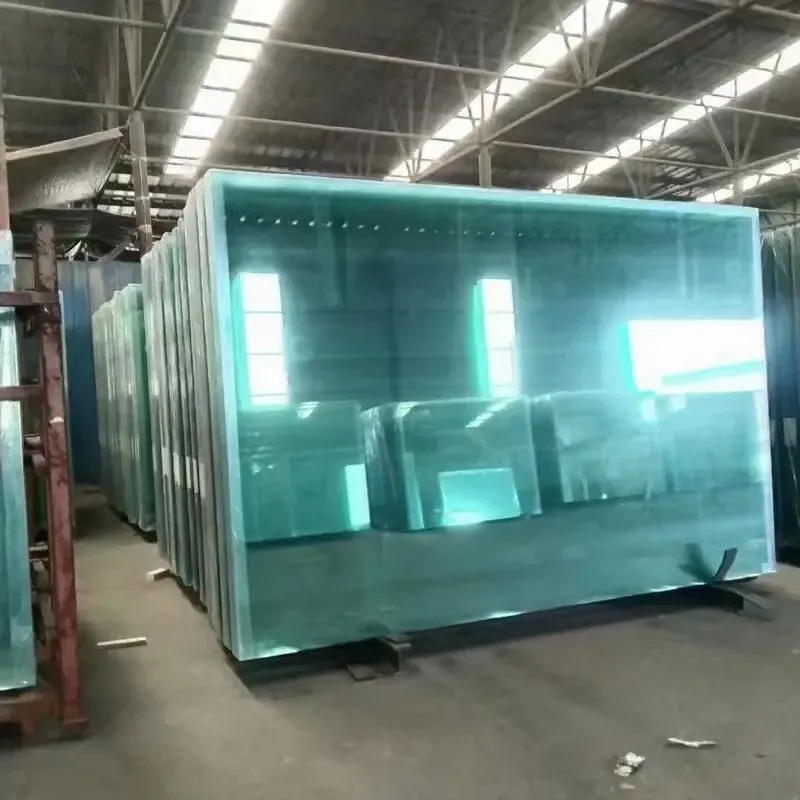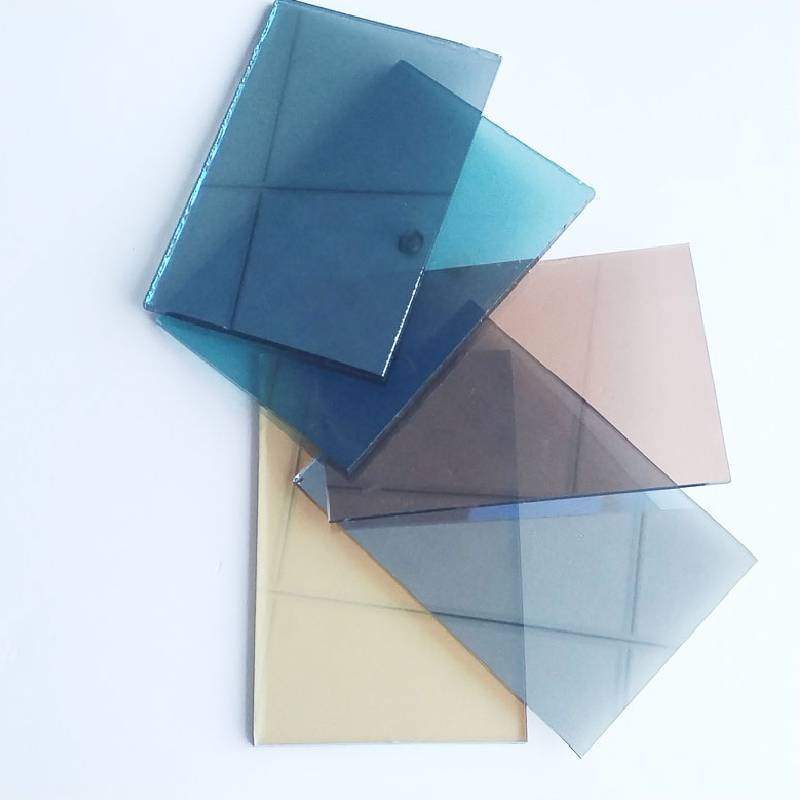Safety glass panels represent a remarkable advancement in architectural and interior design, merging both functionality and aesthetics. These panels are engineered to provide an enhanced level of safety and security, all while offering versatile design elements that can transform spaces. As a staple product in modern construction and renovation projects, their impact is increasingly being recognized in both residential and commercial contexts.

The versatility of safety glass panels lies in their composition and application.
Made from tempered or laminated glass, these panels possess high levels of durability. Tempered glass is subjected to thermal treatments, making it significantly more robust than regular glass. The process involves heating the glass to over 600 degrees Celsius and then rapidly cooling it. The outcome is a pane that is not only harder to break but also shatters into small, rounded cubes rather than jagged shards when broken—significantly reducing injury risks.
Laminated glass, on the other hand, consists of two or more layers of glass, with an interlayer typically made of polyvinyl butyral (PVB). This construction ensures that even if the glass is impacted, the pieces cling to the interlayer, maintaining structural integrity and acting as a barrier against external elements. This characteristic also offers added benefits in sound reduction, making laminated glass panels a preferred choice in noise-prone areas.

An important facet of safety glass panels is their expertise-driven design flexibility. Architects and designers have the liberty to utilize these panels in various configurations—ranging from structural facades to intricate interior design elements like staircases, balustrades, and storefronts. Their adaptability to different cutting, shaping, and coloring processes further enhances design creativity while maintaining safety standards.
Occupant safety is paramount, and safety glass panels offer a trusted solution. Compliance with stringent safety regulations and building codes remains non-negotiable, substantiating the authoritativeness of safety glass panels in construction. For instance, in seismic-prone zones, these panels are preferred due to their ability to withstand considerable stress without compromising the safety of the building’s inhabitants.
safety glass panels
Moreover, beyond structural safety, these panels can integrate additional security features. Modern safety glass panels can include embedded alarms, UV protection coatings, or even bullet-resistant specifications. These advancements underline the material's evolution in meeting ever-growing safety concerns in today's world.
Sustainability plays a notable role in the appeal of safety glass panels. As the global community shifts towards eco-friendly solutions, manufacturers have innovated production processes to decrease energy consumption and reduce carbon footprints. Techniques such as low-emissivity coatings are employed, which help in improving thermal efficiency—aiding in energy conservation within buildings.
In terms of trustworthiness, the reliability of safety glass panels is supported by rigorous testing and certification processes conducted by authoritative bodies in the construction materials industry. These tests typically evaluate impact resistance, load tolerance, and durability under various environmental conditions. Certification labels attached to these products are a testament to their quality and performance, offering peace of mind to both architects and end-users.
The growing popularity of safety glass panels is not merely due to their robustness but also their aesthetic versatility. From minimalist designs that exude modernity to intricate patterned glass that adds an artistic touch, these panels can accommodate a variety of stylistic preferences. Technological advancements in printing and surface treatments have broadened the design possibilities, allowing for personalized touches that do not compromise on safety.
In summary, safety glass panels stand as a superior choice for any project that demands safety, reliability, and design flexibility. Their unparalleled combination of durability, innovative features, and eco-friendly production processes positions them as an authoritative player in the construction industry. As designers and architects increasingly prioritize safety and sustainability, these glass panels are set to become indispensable in future-forward architectural practices.
 Afrikaans
Afrikaans  Albanian
Albanian  Amharic
Amharic  Arabic
Arabic  Armenian
Armenian  Azerbaijani
Azerbaijani  Basque
Basque  Belarusian
Belarusian  Bengali
Bengali  Bosnian
Bosnian  Bulgarian
Bulgarian  Catalan
Catalan  Cebuano
Cebuano  Corsican
Corsican  Croatian
Croatian  Czech
Czech  Danish
Danish  Dutch
Dutch  English
English  Esperanto
Esperanto  Estonian
Estonian  Finnish
Finnish  French
French  Frisian
Frisian  Galician
Galician  Georgian
Georgian  German
German  Greek
Greek  Gujarati
Gujarati  Haitian Creole
Haitian Creole  hausa
hausa  hawaiian
hawaiian  Hebrew
Hebrew  Hindi
Hindi  Miao
Miao  Hungarian
Hungarian  Icelandic
Icelandic  igbo
igbo  Indonesian
Indonesian  irish
irish  Italian
Italian  Japanese
Japanese  Javanese
Javanese  Kannada
Kannada  kazakh
kazakh  Khmer
Khmer  Rwandese
Rwandese  Korean
Korean  Kurdish
Kurdish  Kyrgyz
Kyrgyz  Lao
Lao  Latin
Latin  Latvian
Latvian  Lithuanian
Lithuanian  Luxembourgish
Luxembourgish  Macedonian
Macedonian  Malgashi
Malgashi  Malay
Malay  Malayalam
Malayalam  Maltese
Maltese  Maori
Maori  Marathi
Marathi  Mongolian
Mongolian  Myanmar
Myanmar  Nepali
Nepali  Norwegian
Norwegian  Norwegian
Norwegian  Occitan
Occitan  Pashto
Pashto  Persian
Persian  Polish
Polish  Portuguese
Portuguese  Punjabi
Punjabi  Romanian
Romanian  Russian
Russian  Samoan
Samoan  Scottish Gaelic
Scottish Gaelic  Serbian
Serbian  Sesotho
Sesotho  Shona
Shona  Sindhi
Sindhi  Sinhala
Sinhala  Slovak
Slovak  Slovenian
Slovenian  Somali
Somali  Spanish
Spanish  Sundanese
Sundanese  Swahili
Swahili  Swedish
Swedish  Tagalog
Tagalog  Tajik
Tajik  Tamil
Tamil  Tatar
Tatar  Telugu
Telugu  Thai
Thai  Turkish
Turkish  Turkmen
Turkmen  Ukrainian
Ukrainian  Urdu
Urdu  Uighur
Uighur  Uzbek
Uzbek  Vietnamese
Vietnamese  Welsh
Welsh  Bantu
Bantu  Yiddish
Yiddish  Yoruba
Yoruba  Zulu
Zulu 


